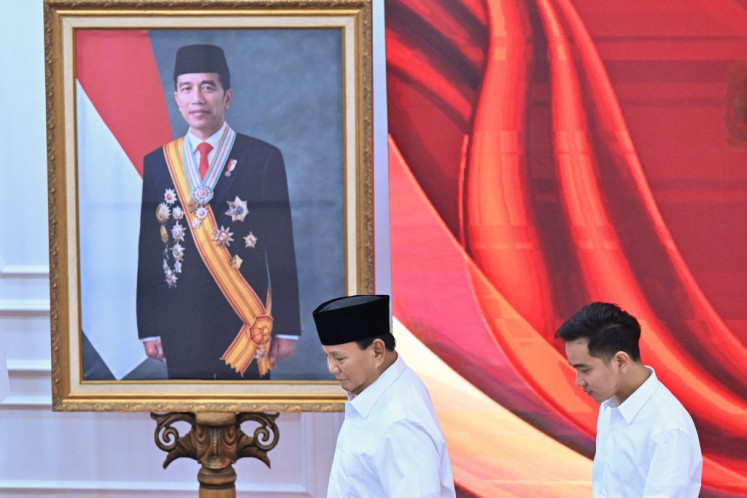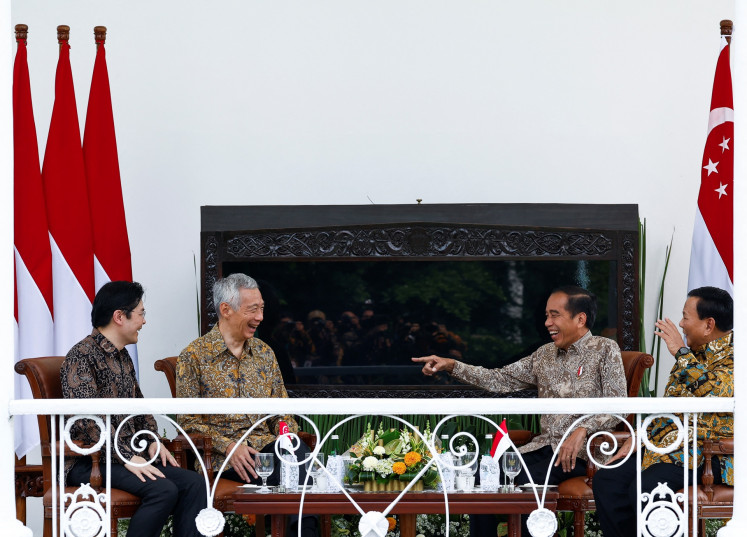Bung Karno’s grave in Blitar becomes Idul Fitri holiday tourist destination
“Sure people still prefer beaches and recreational parks,” he said. However, the grave was an attraction for spiritual tourists, Amnezar said.
Change Size
 Visitors walk around Sukarno's statue at his grave compound in Blitar, East Java, on Friday. (JP/Asip Hasani)
Visitors walk around Sukarno's statue at his grave compound in Blitar, East Java, on Friday. (JP/Asip Hasani)
T
he grave of Indonesia’s founding father, Sukarno or Bung Karno, has become a favorite destination for religious tourists visiting Blitar in East Java over the Idul Fitri holiday.
Although less popular than beaches and recreational parks in the area, the grave remains popular among those who uphold a tradition of ziarah during the religious holiday. Ziarah means visiting places considered to have divine or spiritual inspiration. Usually, people visit the graves of their family members or of public figures.
Bung Karno’s graveyard attendant, Kahfi Amnezar, said that from Wednesday, the first day of the Idul Fitri holiday, until Friday there were between 700 to 900 visitors each day.
“Sure people still prefer beaches and recreational parks,” he said. However, the grave was an attraction for spiritual tourists, Amnezar added.
The second day of the Idul Fitri holiday, June 6, was also Sukarno’s birthday. He was born in 1901 in Surabaya, East Java. In the 1950s during the Guided Democracy period the first president introduced a political concept called Nasakom, or the revolutionary unity of nationalism, religion and communism. Historians have said that many Indonesians tend to underline Sukarno’s role in the birth of Pancasila while conveniently forgetting his leftist ideas.
However, Amnezar said, many tourists included Sukarno’s grave among the ziarah visits to the graves of the Wali Songo, the nine wise men who are believed to have brought Islam to the archipelago. For traditional Javanese Muslims, he said, Sukarno was believed to be the 10th wali.
“That’s why there is less of a recreational more of a spiritual tone to the visits to the grave,” Amnezar went on.
However, during school vacations visitors went there for educational purposes, with buses from schools unloading up to 1,000 children at the site.
However, some visit as part of their mudik (hometown return) tradition.
“While in Blitar to see the family, I came here,” said Indri, a visitor from Jakarta.
Despite the close association with spiritual tourism, Blitar administration and Sukarno’s family continue to develop Sukarno’s grave for other tourist aspects as well. During the presidency of Sukarno’s daughter, Megawati Soekarnoputri, the government built the Bung Karno Library as part of the grave compound expansion.
“This is to expand the tourism aspect, from the predominance of religious visitors to ones with history or education in mind as well,” said Tourism and Culture Agency head Tri Iman Prasetyono.






